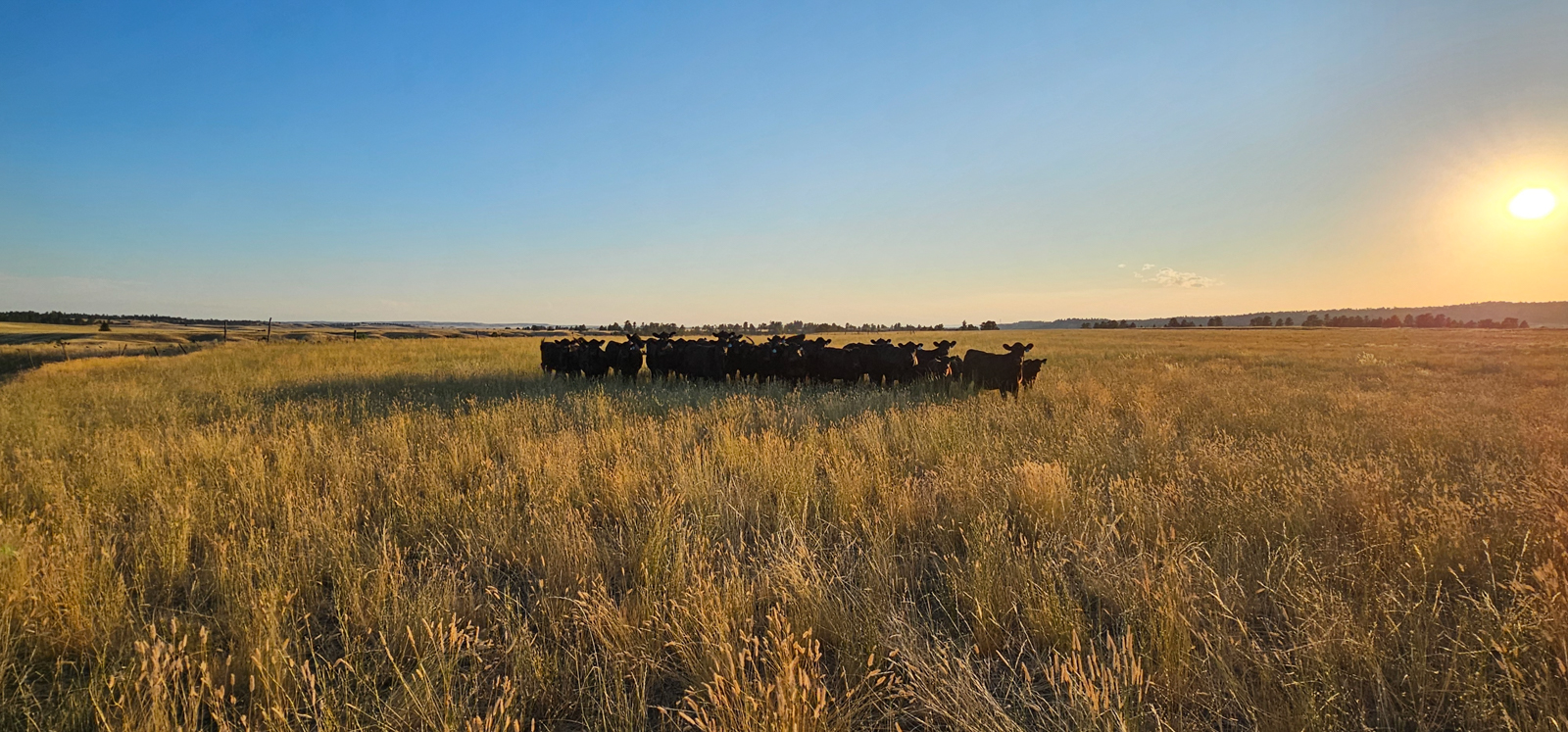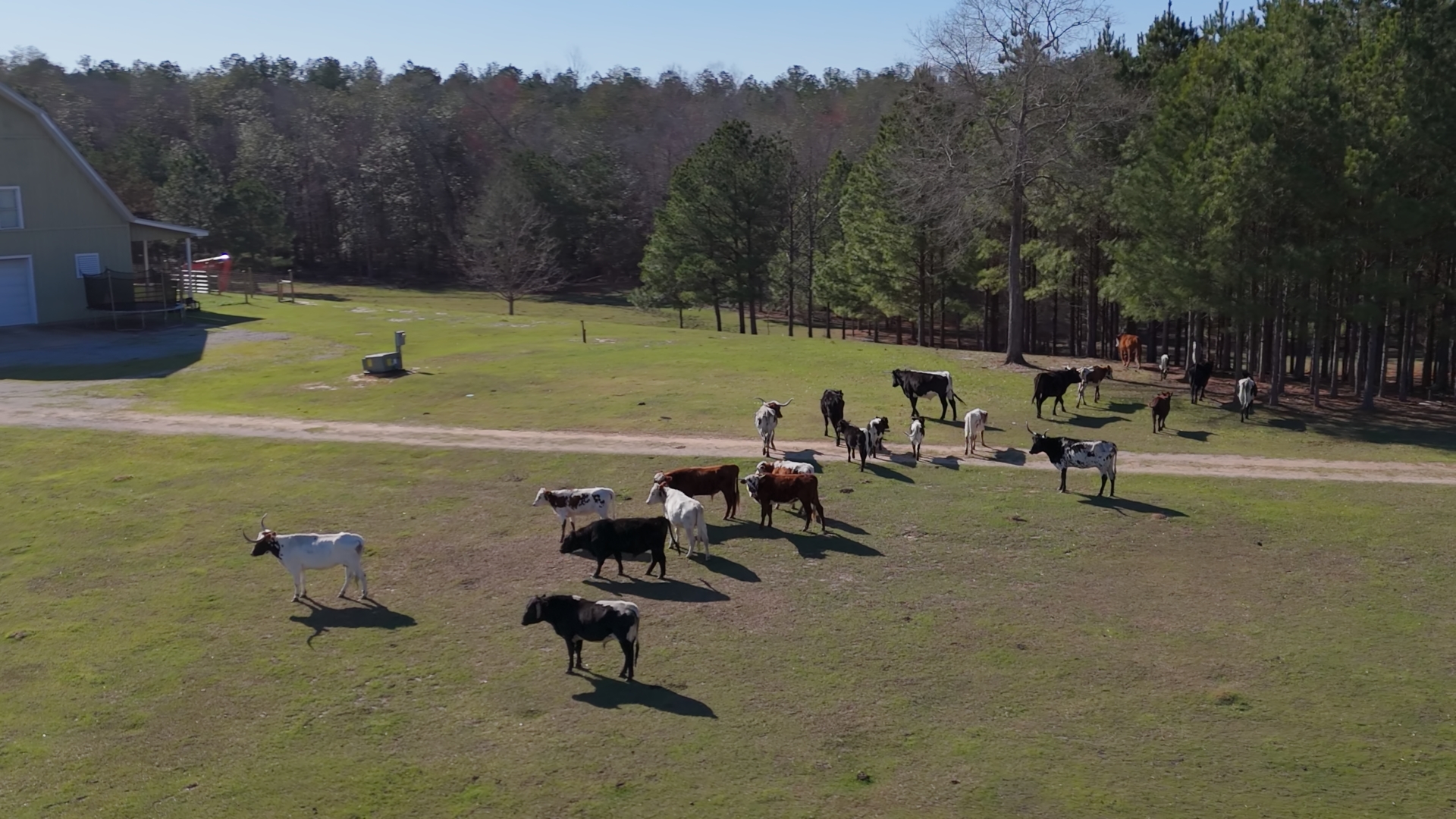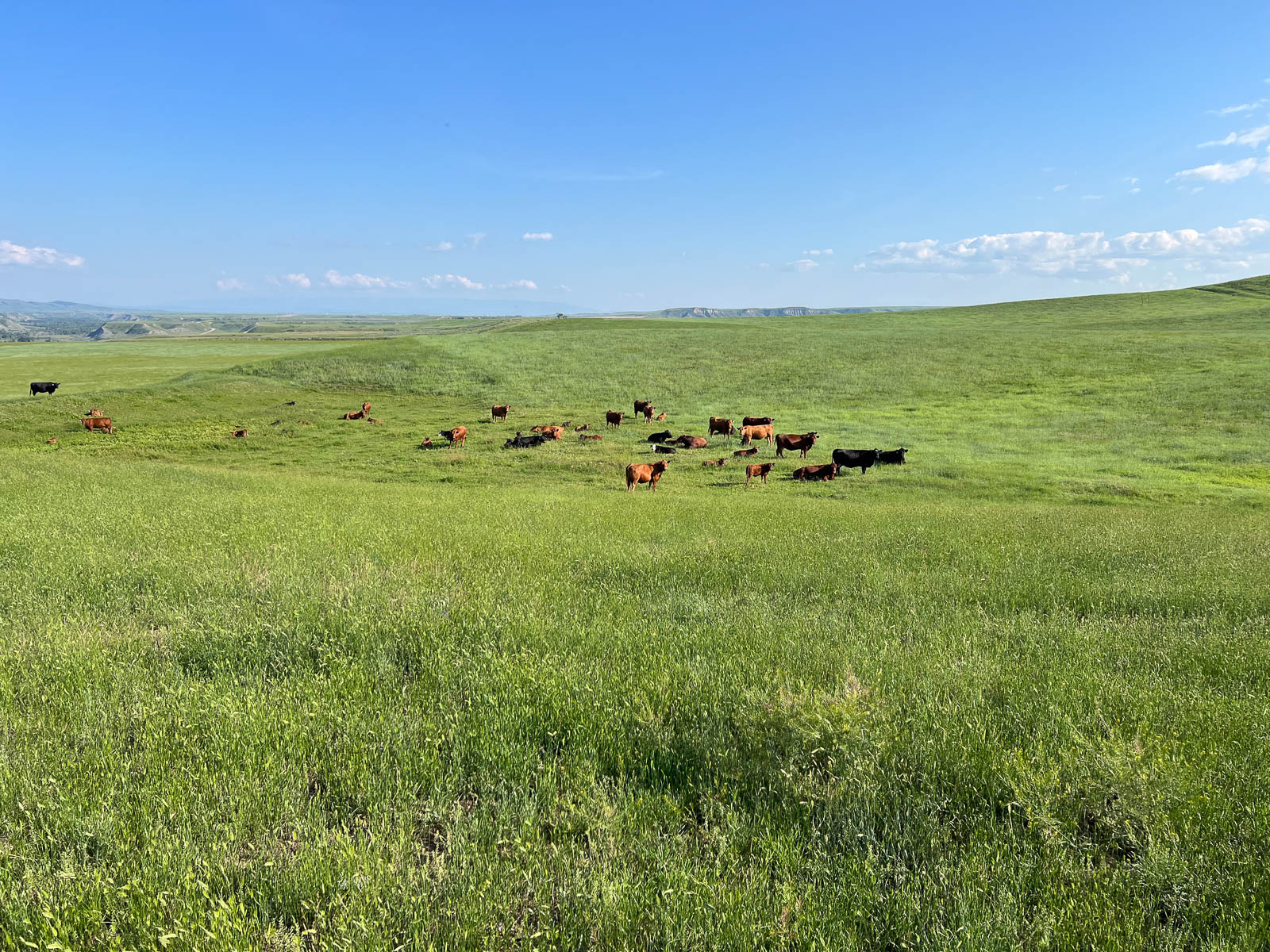By Emily Feuz Staal

While the beef futures market may seem abstract, filled with fluctuating prices and financial jargon, it has real impacts on ranchers, landowners, and investors alike. To shed light on how it works and why it matters, we sat down with Dr. Dillon Feuz for an in-depth discussion. Dr. Feuz a professor of Applied Economics at Utah State University, where he has focused his research on livestock marketing and ranch production since 2006, and served as department head from 2012 to 2021.
“Not everyone will use the futures directly, but almost everyone that’s selling calves will be impacted by them,” is what Feuz tells his students. “If you are doing a direct contract with someone, they are looking at what the futures are. Understanding the futures market can help you be better at negotiating.”
Understanding the Basics of Cattle Futures Market
The futures market began in the 1850s with cash-forward contracts for corn. To enforce these contracts, the Chicago Board of Trade was established, which evolved into today’s livestock futures market. Today, thousands of contracts trade daily on the Chicago Mercantile Exchange (CME Group).
In cattle trading, there are two main types of futures: feeder cattle and live cattle. Feeder cattle futures are based on steer calves weighing between 700 and 900 pounds that still need to be finished or fed out—hence the term “feeder cattle.” Live cattle futures represent cattle that typically come from a feedlot and are ready for slaughter. In ranch real estate, our clients primarily focus on feeder cattle, so that will be our focus here. Many ranches sell their calves at lighter weights than the feeder cattle contract, but Feuz says it is still the best indicator of the likely direction of weaned calf prices.
Feeder cattle futures contracts are based on 50,000 pounds of cattle (typically 70 head). While producers may have more or fewer animals, they can still trade a full contract. Feuz notes, “Just recognize that when you sell them on the cash market, you will have more or less revenue than what the futures pay out.”
Futures contracts are offered for specific months—January, March, April, May, August, September, October, and November—allowing producers to hedge around their planned sale. “If I have yearlings on grass this summer and plan to sell in September, I look at the September contract. Use the contract month that aligns with when you’ll sell,” says Feuz.
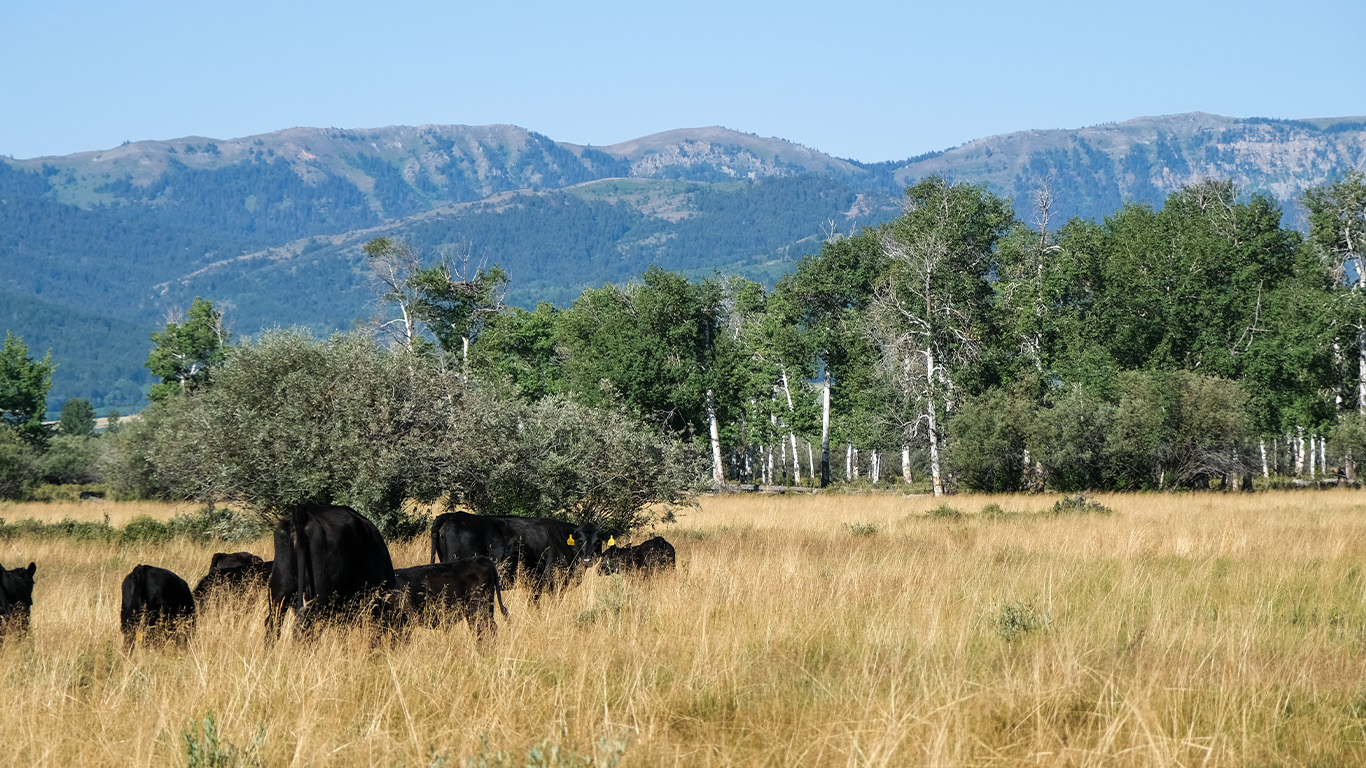
How Feeder Cattle Futures Are Settled
According to Feuz, “The feeder cattle futures market is unique because it’s cash settled, meaning no physical cattle are exchanged. Instead, when the contract expires, it’s settled in cash based on the difference between the contract price and the market price.”
The settlement price for feeder cattle futures is based on a cash index that averages the prices of steers sold at auctions across twelve states. This means that instead of traders exchanging actual cattle, the futures contract is settled based on the real market prices of cattle at the time of expiration. Because the final settlement price is tied to real sales data, it accurately reflects the actual market value of feeder cattle.
For example, this fall’s prices are not based on the current spring prices. “It’s based on what traders think the prices will be. By the time October arrives, the futures will be based on fall cattle prices. This prevents excessive speculation from driving prices too high or too low because, in the end, futures have to settle based on real market transactions rather than just trader speculation,” says Feuz.
An example Feuz used is that a rancher might sell a futures contract for 50,000 pounds of feeder cattle (approximately 70 head) at $2.80 per pound for delivery in October. If, by the contract’s expiration, the market price rises to $3.00 per pound, the rancher would lose $0.20 per pound on the futures contract. However, because they can sell their actual cattle at the higher local market price, they effectively recover the difference. Conversely, if the market price drops to $2.50 per pound, the rancher gains $0.30 per pound on the futures contract, offsetting the lower cash market price.
Understanding Basis Risk
While futures contracts provide price stability, there is always basis risk—the difference between the futures price and the actual local market price at settlement. Wyoming markets, such as Torrington, often trade slightly above the 12-state average, meaning local producers may receive more than the futures price.
Additionally, weight plays a role in pricing. As mentioned above, feeder cattle contracts are based on 700 to 900 pound steers, but actual cattle may weigh slightly more or less, which affects the price per pound. Producers must account for this when estimating returns and using futures as a pricing tool. “Weight really matters because as you go from a lighter to a heavier calf, the price per pound is going to change; that weight is an average, but you have to think about it,” says Feuz.
Who Uses Feeder Cattle Futures—and Why?
According to Dr. Feuz, there are three primary types of participants in the feeder cattle futures market:
1. Those who own cattle or plan to own cattle, such as ranchers raising calves or stockers and yearlings. Their goal is price protection. “If a rancher is selling cattle, the risk is that the market goes lower,” says Feuz. “The hope is that futures can offset the price at which they ultimately sell.” To hedge against market declines, these producers put down margin money, a deposit that secures their futures position.
2. Those who want to buy cattle, such as feedlots or even a wheat pasture operator in Oklahoma looking to finish cattle. These buyers use futures to protect themselves against prices rising too high. “They’re buying futures contracts to lock in today’s lower prices in case the market climbs,” says Feuz. Like sellers, they also post margin money to enter the market.
3. Speculators, who neither own nor plan to own cattle. “Most traders today have never owned a cow and don’t want to,” says Feuz. Instead, they try to profit by reading trends and charts—buying low and selling high, or selling high and buying low. Some trade several times a day, while others take longer positions. “This is similar to trading stocks. Selling futures is the same concept as shorting a stock. If you think it’s going to go down, you short it.”
The Relationship Between Traders and the Market
“Do speculators have any effect as a whole? Yes and no—it’s a heated topic,” Feuz says. On one hand, feeder cattle futures are cash-settled, meaning they ultimately reflect real auction prices. In that sense, speculative trading doesn’t impact long-term prices significantly.
But in the short term, speculation can swing the market—and for producers caught in that window, those price movements are very real. Feuz recalls a moment from earlier this year: “In January, I was giving a market outlook talk. At the time, feeder cattle futures for fall delivery were trading well below where I thought they’d end up in October. Was that because speculators were pessimistic? I can’t prove it, but futures have since risen from around $2.60 to $2.80—closer to where I thought they should be.”
This short-term volatility can create challenges. “If a producer happens to be buying or selling during a time when speculators are pushing prices up or down, they may get caught in a distorted market,” he explains. However, in the long run, speculation tends to balance out.
How the Cattle Futures Market Works Day-to-Day
The futures market may seem intimidating, but at its core, it’s a tool producers can use to manage risk and secure prices for their livestock ahead of time. Here’s how it operates on a day-to-day basis:
Do most ranchers actually use the futures market?
“Not really,” says Feuz. “About 90% of producers don’t trade futures.” Many utilize tools like Livestock Risk Protection (LRP) Insurance via the USDA’s Risk Management Agency. LRP operates similarly to a futures or options contract, providing price protection for smaller lots. While a futures contract typically covers 50,000 pounds of cattle, many producers deal in 25,000- or 75,000-pound lots. Insurance offers greater flexibility and is becoming more popular for that reason.
Still, Feuz recommends that even if one doesn’t use futures, they should understand them. Why? Because knowing how the cattle futures market is behaving helps producers negotiate better prices. An example Feuz uses is that if a buyer shows up offering $3.00 per pound for calves to be delivered in the fall, that might sound like a great offer—but is it? If the current futures price for October delivery is $2.87 per pound, and you know that 500-pound calves typically fetch $0.15–$0.20 above futures, that puts your expected price at around $3.02 to $3.07. In that case, $3.00 might be a fair deal, especially if it means locking in a guaranteed price. But if the buyer offers $2.90 when the futures suggest $3.10 is possible, you might want to hold out.
This is where the futures market becomes a valuable benchmark—even for those who never place a trade. It helps producers evaluate offers in real time and advocate for fairer pricing. If you don’t know the market offhand, you can often call your local auction or check USDA reports, many of which are publicly available. Many auctioneers will share historical pricing information, helping ranchers and ranch managers stay informed.
How Are Prices Determined in the Beef Futures Market?
In short, “supply and demand.” But as Feuz explains, several key factors play into that balance—particularly for feeder cattle:
1. Size of the National Cow Herd
The U.S. cow herd is currently the smallest it has been since the 1960s, largely due to prolonged drought. Rebuilding takes time, “usually 2 to 4 years” according to Feuz, so “supply changes slowly. Fewer cattle available means prices remain high.”
2. Price of Corn
Feedlots purchase corn at market price, so when corn prices rise (due to drought, politics, or trade issues), feeder cattle prices often drop. “As the price of corn goes higher, it tends to drive feeder cattle prices lower,” Feuz explains. “If corn is lower, feeder cattle can be higher.”
3. Live Cattle Futures
Feedlot buyers also consider what they expect to sell finished cattle for once they’re out of the feedlot. If live cattle futures are trending up, they’re more willing to pay more for feeder cattle.
These are considered the “fundamental” factors, and they tend to move slowly. But daily market changes? That’s a different story. “The futures market trades more on rumor than it does on fact,” says Feuz. “Rumors hit the market, and speculators jump in.” News, government reports, or whispers of trade retaliation can all cause sharp price swings.
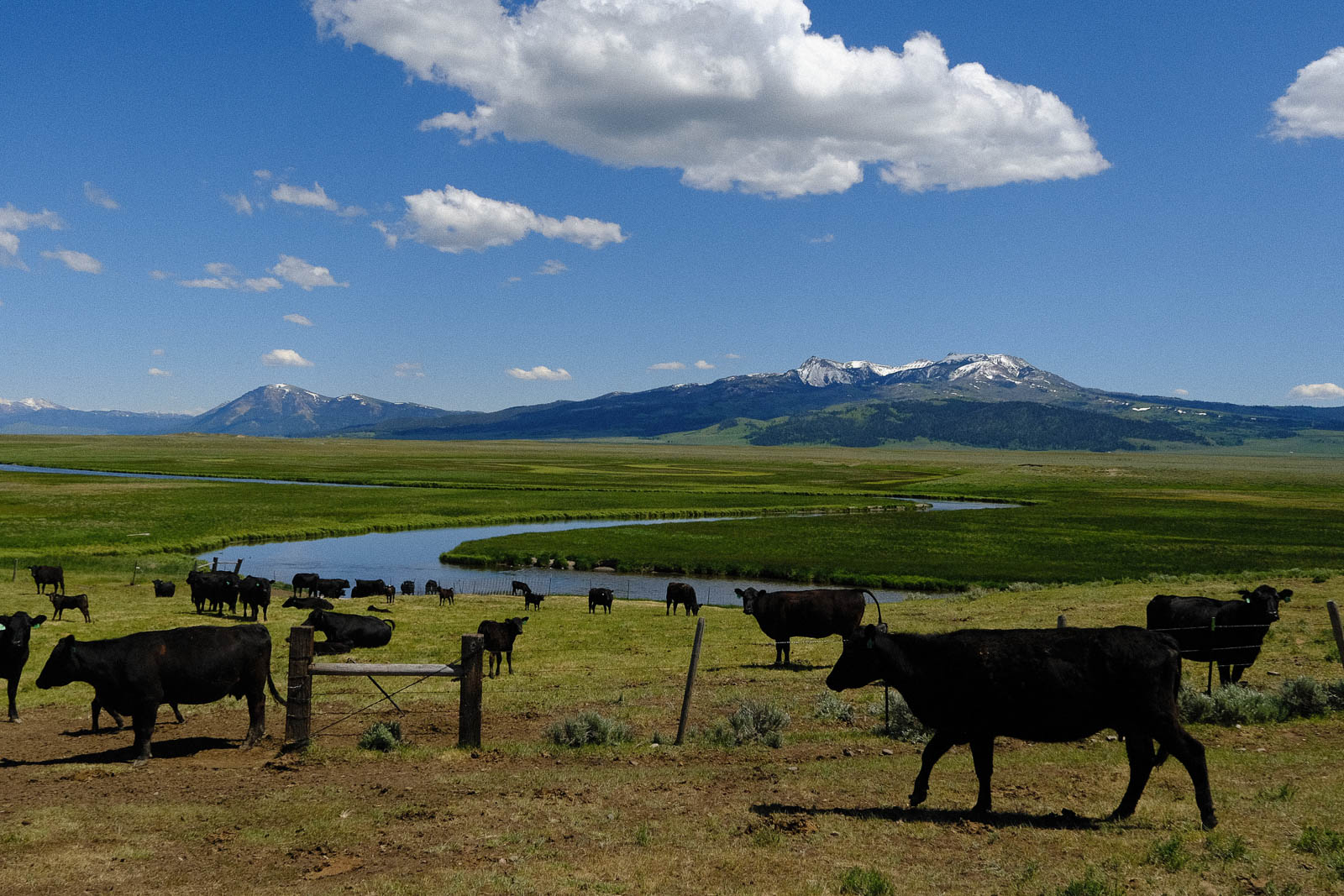
Real-Life Implications
External Influences to Watch
Outside forces often impact beef prices and affect ranchers and feedlots. Drought can trigger herd reductions, tightening supply and pushing prices up. Rising feed costs, particularly corn, can shrink profit margins and lower feeder cattle prices. Trade policy is a force particularly outside of a producer’s control. While the U.S. exports less than 20% of its beef, according to Feuz, key markets such as Japan, China, Canada, and Mexico still carry significant weight. Trade disputes or new tariffs can quickly shift prices.
As Feuz explains, “Those kinds of things can be completely out of a rancher’s or feedlot’s hands. As compared to a drought or feed cost, which you can adjust for, trade is harder to manage.”
What’s Coming in the Next Few Years?
Feuz is cautiously optimistic. “The long-term picture is that we have a relatively small cow herd right now, mostly because of drought in key cow-calf regions like Texas, Oklahoma, Wyoming, and Nebraska,” he says. “Producers cut back. It will take good weather and high prices to encourage rebuilding.” As cow-calf producers return, supply will grow, and prices may gradually decline—especially around 2026 and beyond.
Some wonder if we’ve hit a ceiling. Feuz agrees that while we’re probably near a peak, “this fall will still be higher than last fall.” But rebuilding the herd will likely bring prices down eventually. Still, the profit margin at the cow-calf level is strong right now. That won’t last forever. “Feedlots and packing companies won’t let that happen indefinitely. They’ll try to get profitability back. It’s a continual battle.”
For now, Feuz believes calf prices should remain favorable for the next two to three years, barring major trade disruptions.
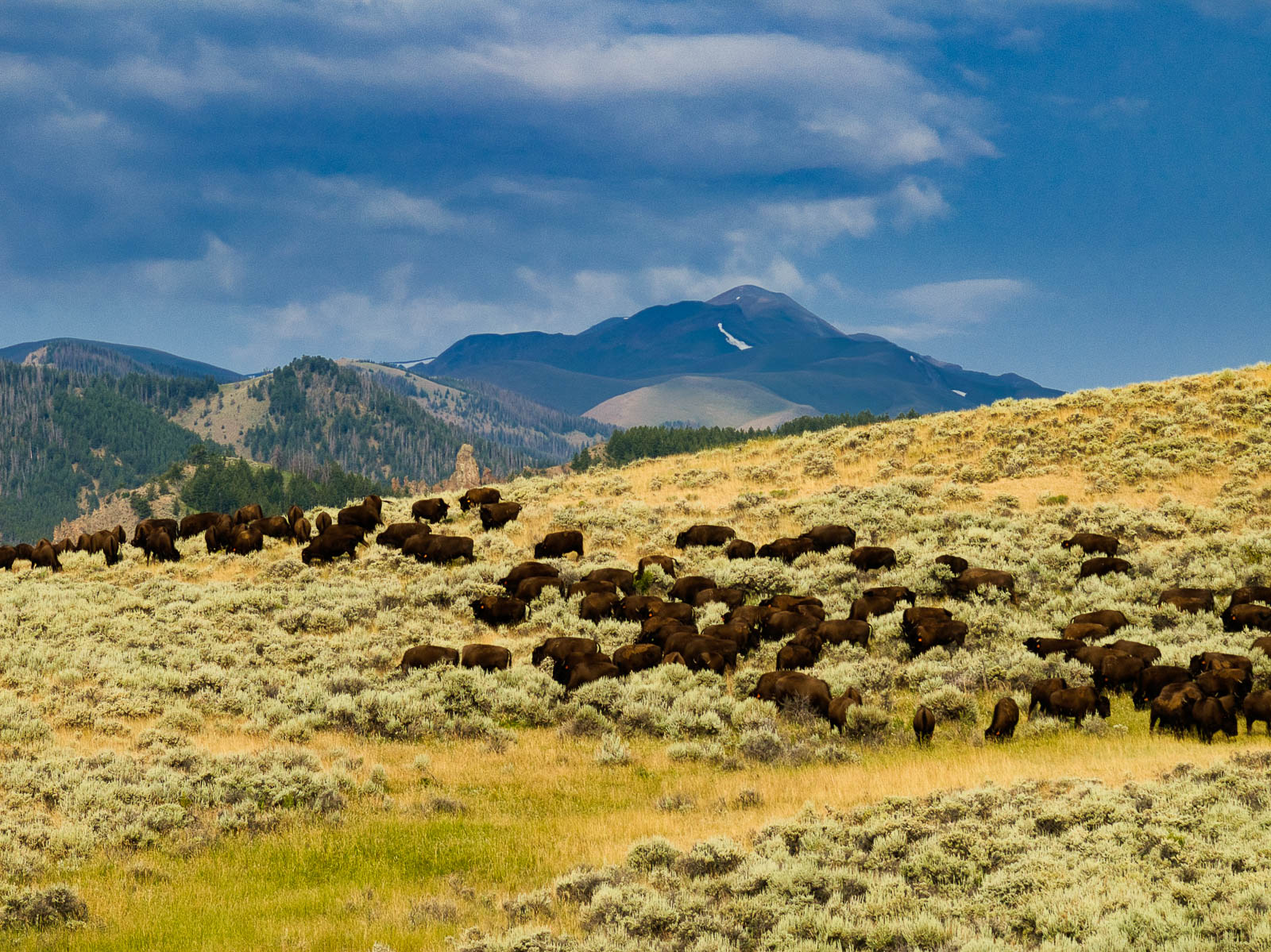
Closing Thoughts for Ranchers and Investors
Feuz has attended stock grower meetings since the nineties and continues to hear the idea that futures markets are controlled by big packers or speculators and should be scrapped. However, over 30+ years, the markets have persisted. His advice? “The markets are not going away. Figure out how to use them in your operation. Not necessarily to trade in them—but to understand them.”
That understanding can help you compare local cash markets to futures prices, time your calf sales or explore forward contracting, and ultimately become a better negotiator. “Don’t fight the market—learn about it and use it to your advantage,” he says. “You won’t be right every year, but if you’re right more often, that can help you survive downturns and thrive in the good years.”
Want to Learn More? Feuz recommends two trusted resources:
• CME Group: Offers ag commodity quotes and educational material on using futures
• Kansas State University Ag Economics: Features farm management tools and resources
For ranchers and investors alike, understanding the beef futures market is essential for making informed decisions in an ever-changing industry. Whether you’re looking to protect your operation from price swings or explore market opportunities, staying educated and proactive are the keys.
At Live Water Properties, we recognize the importance of economic trends in ranch ownership. If you’re interested in learning more about how cattle futures market conditions can impact your ranch investment, reach out to our team—we’d love to help you navigate the landscape.



